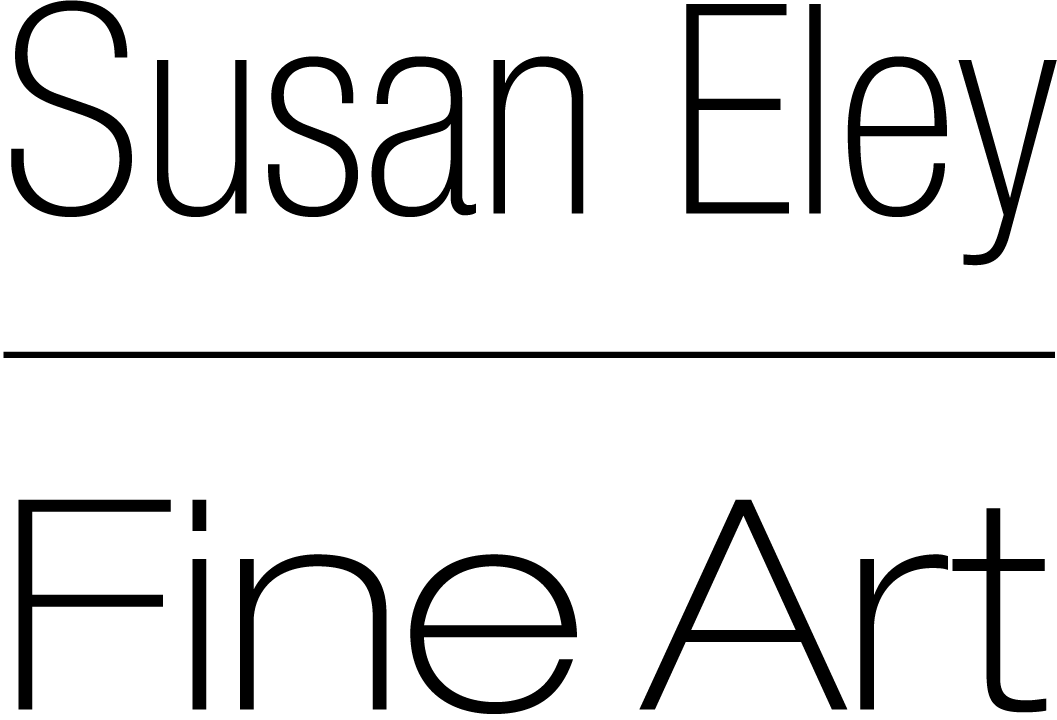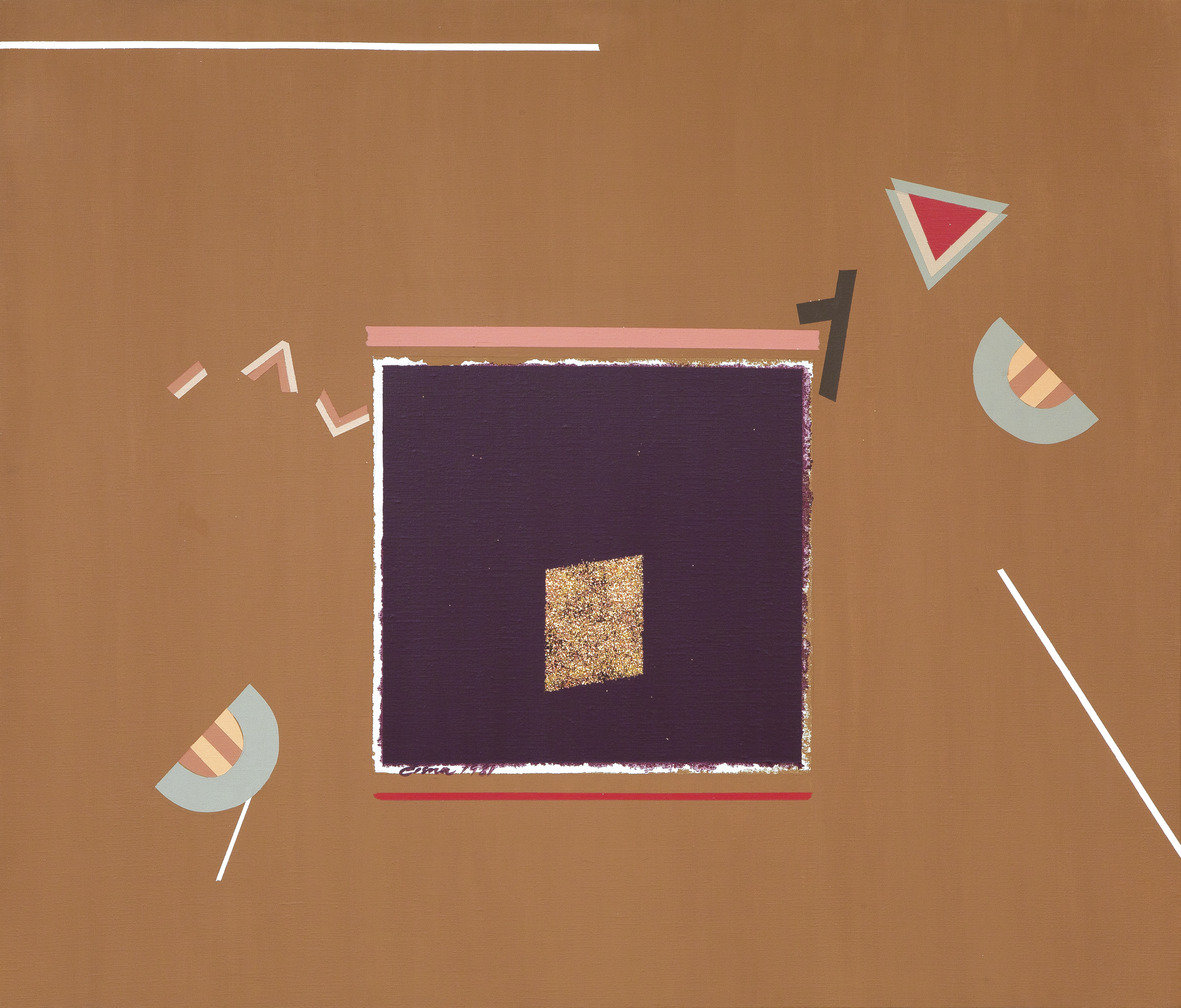Jazzue
Artist: Carole Eisner
Price:
$9,200.00
Medium: Painting


More Details
Creation Date: 1981
Materials: Acrylic on linen
Dimensions: 40" x 47" x 1"
About the Item: Eisner’s practice as a sculptor and painter spans almost 60 years, and features geometric
abstract painting, gestural and figurative painting and small-scale and monumental sculpture, welded from recycled scrap steel. The geometric paintings, with a total of about 30 extant works, were all produced in about five years from the late 1970s through the early 1980s.The paintings are a study in geometry upon first glance; however, they are not the mere mid-century modern version of relating shapes. Colorful backgrounds are illuminated with white lines and green rectangles; shapes overlay and collide, coexist and confront. As a whole, Eisner’s abstractions
express kinetic energy–the pent up energy that is ultimately expressed by the scientific actions of fission and fusion.
While Pop Art was in full force, Eisner always related more to the Abstract Expressionists. “I
recall very vividly going to MoMA during high school to see Pollock’s paintings,” she says. “It
was an epiphany for me to understand that you could paint outside of the lines.” Along with
Pollock, she was also influenced by the work of Josef Albers and Marc Rothko, who
demonstrated the power of the rectangle and how colors could vibrate and shimmer when next
to each other. By the late 70s Eisner’s hieroglyphics began to appear on the edges and inside
and outside of the larger geometric shapes. Squiggles, dashes, Xs, triangles, lines and
semi-circles would dance across the canvas, like punctuation marks in contrasting colors, or
staccato notes on a musical score. Eisner played with the thickness of borders around the
rectangles and squares, sometimes using the razor edge of the tape to create a sharp line, but
increasingly allowing the line to blur and the color to bleed, creating fuzzy edges. “It felt right to
let the color leak out a bit, more like how the world really is,” adds Eisner.
By the end of this period, Eisner’s signature shapes grew and obliterated the confines of the
larger quadrangles. All grown up and independent, the shapes now took center stage, and a
new series of geometric paintings was born, exemplified here by “Yond” and “Stacked”. The
brief era of the Dancing Hieroglyphics had ended, making the paintings from this series all the
more precious.
abstract painting, gestural and figurative painting and small-scale and monumental sculpture, welded from recycled scrap steel. The geometric paintings, with a total of about 30 extant works, were all produced in about five years from the late 1970s through the early 1980s.The paintings are a study in geometry upon first glance; however, they are not the mere mid-century modern version of relating shapes. Colorful backgrounds are illuminated with white lines and green rectangles; shapes overlay and collide, coexist and confront. As a whole, Eisner’s abstractions
express kinetic energy–the pent up energy that is ultimately expressed by the scientific actions of fission and fusion.
While Pop Art was in full force, Eisner always related more to the Abstract Expressionists. “I
recall very vividly going to MoMA during high school to see Pollock’s paintings,” she says. “It
was an epiphany for me to understand that you could paint outside of the lines.” Along with
Pollock, she was also influenced by the work of Josef Albers and Marc Rothko, who
demonstrated the power of the rectangle and how colors could vibrate and shimmer when next
to each other. By the late 70s Eisner’s hieroglyphics began to appear on the edges and inside
and outside of the larger geometric shapes. Squiggles, dashes, Xs, triangles, lines and
semi-circles would dance across the canvas, like punctuation marks in contrasting colors, or
staccato notes on a musical score. Eisner played with the thickness of borders around the
rectangles and squares, sometimes using the razor edge of the tape to create a sharp line, but
increasingly allowing the line to blur and the color to bleed, creating fuzzy edges. “It felt right to
let the color leak out a bit, more like how the world really is,” adds Eisner.
By the end of this period, Eisner’s signature shapes grew and obliterated the confines of the
larger quadrangles. All grown up and independent, the shapes now took center stage, and a
new series of geometric paintings was born, exemplified here by “Yond” and “Stacked”. The
brief era of the Dancing Hieroglyphics had ended, making the paintings from this series all the
more precious.

About The Artist
Carole Eisner was born in 1937 and raised in New York City. After receiving her BFA from Syracuse University in 1958, Eisner worked as a designer for several fashion houses in New York City, where she garnered industry awards including Mademoiselle Magazine’s “Best Young Designer” in 1961. After the first of her five children was born, Eisner began to paint at home. “I didn’t have a studio in our first apartment, so I threw tarps on the sofas and just started to paint,” she says. Shortly after, Eisner began to experiment with scrap metal, welding sculptures that grew in scale as her artistry progressed over the following decades. Eisner's longevity as an artist is a testament to the natural marriage between her metal sculptures and works on canvas. Over a 50 year career, Eisner has had dozens of solo exhibitions across the United States and several internationally. She has participated in group shows at The Guggenheim Collection and other notable museums. Eisner is represented in private, public, and corporate collections and has been published in The New York Times, New York Magazine, Who’s Who in American Art, and Vogue. Eisner currently resides in Weston, Connecticut with her husband.
More Galleries to Explore














 Facebook
Facebook
 Twitter
Twitter
 Email
Email
















